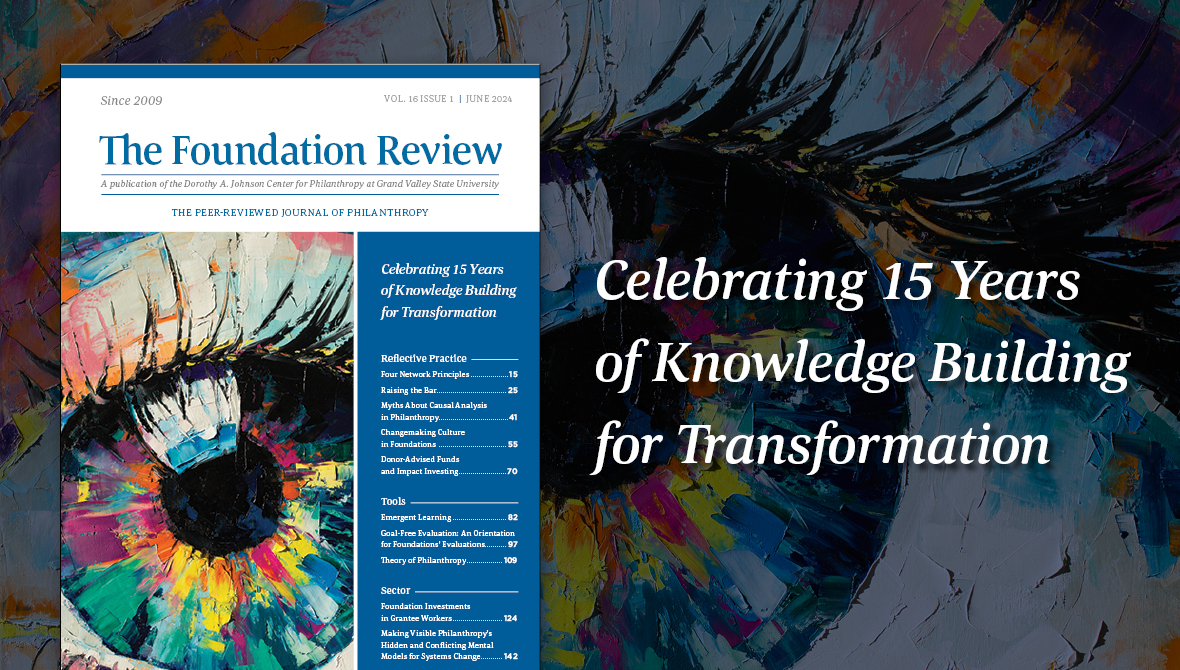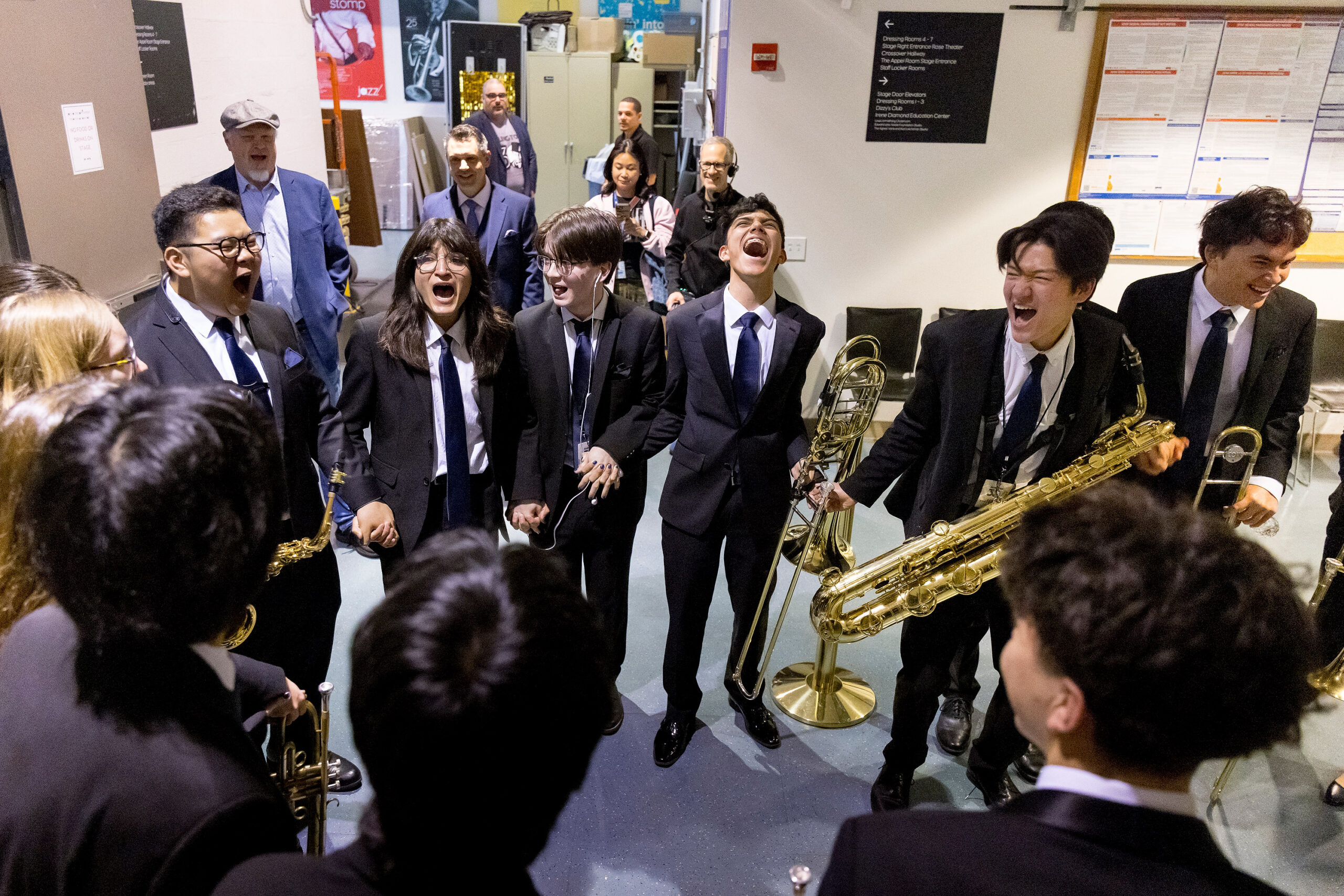Join us in celebrating our CEO Sam Marks for being included in a special issue of Foundation Review featuring the most well-received articles in the journal’s 15-year history.
The Foundation Review, published by the Dorothy A. Johnson Center for Philanthropy, has served as a platform for authors to share expertise and insights and contribute to the collective knowledge base in philanthropy since its launch in 2009. To date, articles have been downloaded nearly 600,000 times by readers from more than 14,000 institutions around the world. Authors representing more than 450 universities, foundations, nonprofit organizations, consulting and research firms, and public organizations and institutions have contributed to the journal.
As part of its 15-year anniversary, Foundation Review has published a special issue — free for all to download and explore — presenting the most well-received articles in the journal’s history, each with author commentary in newly written prologues.
Sam’s 2022 article, Donor-Advised Funds and Impact Investing: A Practitioner’s View, argues that any discussion of foundations embracing impact investing must include some discussion of one of the largest — and growing — sources of philanthropic capital: donor-advised funds. This article takes a practitioner’s view on the issue, reflecting on lessons learned by a sponsor of donor-advised funds that has long accommodated the impact investing interests of its donors.
In addition to writing new prologues, authors were invited to submit an introductory video reflecting on the impact of their articles. View Sam’s video here. A transcript is below.
Sam Marks here. I’m the Chief Executive Officer of FJC, a foundation of philanthropic funds. I’m in my fifth year here. We are primarily a sponsor of donor-advised funds. We also fiscally sponsor about 160 organizations and act as a financial intermediary, helping imaginative donors make impact investments with capital in their DAF accounts. I’ve been a nonprofit guy—sometimes a grant seeker, sometimes a grant maker—working at the intersection of the nonprofit sector and finance.
“Instead of centering on donor preference for how philanthropic resources can be put to work, we should center on what nonprofits need, their gaps in their business models, and how they could benefit from building up their balance sheets—not just having grants that help them operate in the black for the year, but investments that build up the financial capacity of the organizations.”
Sam Marks, CEO of FJC – A Foundation of Philanthropic Funds
In my 30-year career, I’ve worked in youth development, affordable housing development, and impact investing at a CDFI before coming to FJC. I’d say it’s about one-third career in philanthropy, two-thirds as a practitioner. I was really honored to have my abstract accepted by The Foundation Review. Having the article peer-reviewed and published is very validating; it really underscores that we’re on to something.
FJC has been working at the intersection of donor-advised funds and impact investing for nearly 30 years, and when I started as CEO in 2019, it was clear there were cool things happening here, but it was a bit of a best-kept secret. It was time to export our practices and inspire others to invest the funds in their DAF accounts in ways that support nonprofits. A lot of it has been about trying to change attitudes and values, letting people know what’s possible, and shifting minds. That means providing thought leadership. Most foundation investment committees have conservative approaches to investing; they invest for market returns, grow their endowment, and give more money away the next year. But what if funds at foundations could be invested to advance mission work and help nonprofits advance their missions?
It’s been really exciting to see that there’s an audience out there that wants to dig into this, do some deep dives, and look at case studies. I really appreciate The Foundation Review. There’s a tendency for foundations to think transactionally, but for us to step back, think big picture, and see patterns is really important. It’s still early days for our article—it’s only been available for several months—so the causal relationships of change in the world may be beyond the powers of some of the folks on this call who are experts on that. But I can say we’ve had a lot of inbound interest about building on some of the case studies we wrote about in the piece.
We had a foundation come to us with a million dollars and open a donor-advised fund to capitalize a low-interest revolving loan fund for one of their favorite youth-serving organizations in New York City. A corporate foundation is preparing to make a million-dollar loan to FJC so we can on-lend it to a series of affordable housing developers, who would then match funds with some donor capital. A couple of our nonprofit borrowers, who’ve borrowed from FJC at a market rate of interest, are interested in working with us to create a pooled fund that would serve their whole sector of legal defender organizations at a below-market rate of interest. We are seeing these green shoots of practitioners and people thinking about this stuff.
I do worry sometimes that we’re preaching to the choir to some degree, because the folks I’d really like to be reading this article are investment committees of foundations and people who work on Wall Street—those who have access to way more resources and might think more creatively about them if they knew what was possible. One of the interesting lanes I’m trying to open is around working with nonprofit boards that may have some resources around the table and some financial sophistication. Instead of centering on donor preference for how philanthropic resources can be put to work, we should center on what nonprofits need, their gaps in their business models, and how they could benefit from building up their balance sheets—not just having grants that help them operate in the black for the year, but investments that build up the financial capacity of the organizations.
These are the kinds of conversations I’m hoping this article can help advance.

We invite you to explore the whole special issue of Foundation Review.
“These articles continue to resonate today because of their provocative, relevant insights that foster discussions and influence philanthropic practices,” said Dr. Hanh Cao Yu, Editor-in-Chief of Special Issues. “Each of them provokes opportunities to continue addressing the issues facing philanthropy today.”




